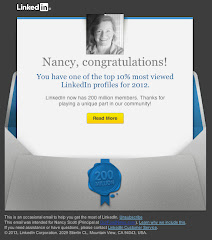I've been hearing about 3D printing -- alternatively, called additive manufacturing -- but only vaguely understood the capabilities. Essentially, 3D printing makes three dimensional objects from a digital model. A little research turned up a gazillion uses.
What Can You Do With 3D Printing?
Products of 3D printing include footwear, dental and medical devices, replacement kidneys, guns, cars, prosthetics, bones, desserts (yes, you know.. like sweet things you eat after dinner!), works of art, jewelry, clothes, musical instruments, industrial replacements parts, and much more.
Researcher James Craddock attended the two-day 3D Printshow in Paris in late November. He's convinced. "I have no doubt it is going to change the world," he says. "The real revolutionary factor is industrial use."
BusinessNewsDaily contributor Elizabeth Palermo says 3D printing will change small business five ways: empower small scale production, create new price point opportunities, facilitate product development, enable prototyping, and make experimentation affordable.
For photos and see-it-yourself inspiration check out this HuffPost story from November 15.
What's Ahead?
Jeremiah Owyang says, "Just as many people who have published blogs, videos, and pictures have become media companies, we’re now seeing people make physical things and personally become like traditional companies." Owyang suggests 5 ways companies can leverage/get involved in 3D printing now: financial backing, manufacturing, supplying, hosting an online marketplace of designers, printers, products and service providers, or becoming an online service provider.
Want to Get Involved?
Currently, 383 3D Printing Meetup Groups get together in the U.S. If you want to learn more about 3D printing or get involved, check it out.
More Examples for Enthusiasts
Shapeways is a Dutch-founded, New York-based 3D printing marketplace and service company that offers do-it-yourselfers a creative bonanza. Users upload design files, and Shapeways prints the objects for them or others. Users can have objects printed from a variety of materials, including food-safe ceramics. As of June 2012, Shapeways had printed and sold more than one million user-created objects.This backgrounder has details.
Tim Zaman, a Dutch researcher, has apparently recreated detailed paintings with a 3D duplication technique that he has designed. The printer uses images from real paintings to reproduce an exact replica of a painting in every detail, it even produces raised brush strokes. Zaman used an Oce printer that can reproduce large paintings at a resolution of 600ppi (600 pixels per inch). The printer moves back and forth to create textured layers. Don’t expect to recreate famous paintings any time soon, though; your the printer needs the original painting to make a replica.
Cornell University faculty and librarians developed The Kinematic Models for Design Digital Library (K-MODDL), which is an open access, multimedia resource for learning and teaching about kinematics - the geometry of pure motion - and the history and theory of machines.
Need a 3D printer at home? The Cube®, voted MAKE magazine’s “easiest to use” and “most reliable” 3D printer, gets you going straight out of the box. "
"The only 3D printer certified for safe at-home use by adults and children … just plug it in and start, says the description." Reminiscent of Apple's "candy Mac" line of computers, this little Wifi monster comes in five body colors, along with 25 free 3D design files. $1,299.
PRINT!




